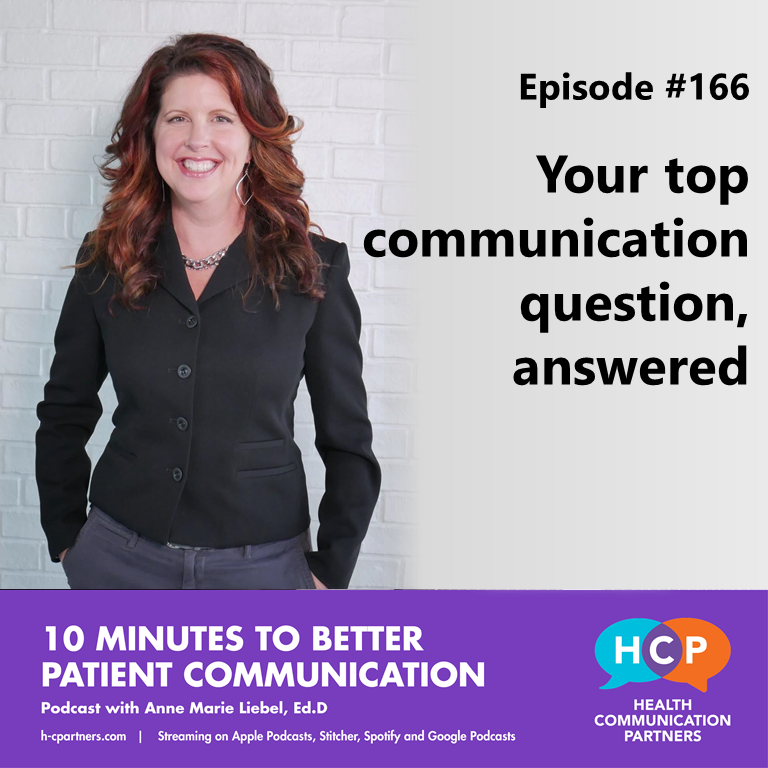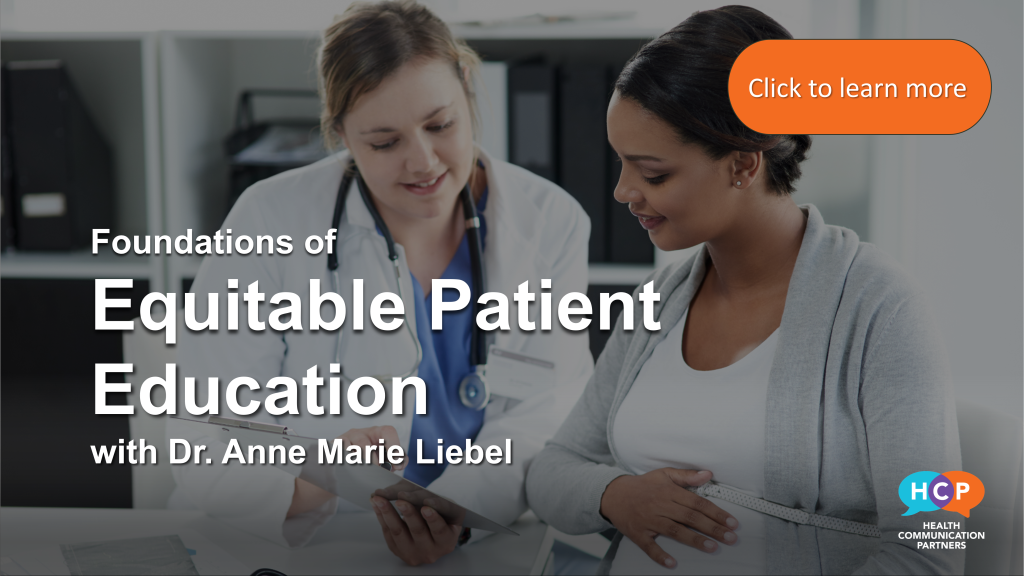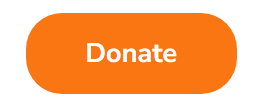I share the most common question I get asked as a communication expert. I tell you how I answer, and break down why it works.

No matter what your role is as a health professional, what your specialty or topic is, or who your audience is, this episode is about the single best piece of advice I can give you. Hi everybody, this is 10 Minutes to Better Patient Communication from Health Communication Partners. I’m Dr. Anne Marie Liebel, and Happy Holidays! This podcast series is my gift to you.
If you like what you’re hearing, there are other ways that you can learn from me, like our hybrid courses. Equitable Patient Education supports your mission of making the most of your time with a patient. You work hard to be an effective educator. This course helps you improve your patient education processes, because I’m as committed as you are to educating well.
Support Reflective practice by making a donation to this series. your contribution goes directly to the costs of producing this independent alternative podcast series. Click the donate link in the show notes or visit healthcommunicationpartners.com/podcast.
You may have heard we recently passed a big podcasting milestone of getting over 10,000 downloads in a single day, which is amazing! Thank you so much. Because there’s so many new folks listening, I thought this would be a good time for me to share a piece of advice that I’ve given a lot over the years, in part because it fits across multiple scenarios, and it helps avoid common pitfalls, and it aligns with top research.
So back in 2019, I’d been asked to give a plenary session at a chronic disease prevention symposium. And during the symposium, when folks would find out that I was speaking and what I was speaking about, they would ask me questions about patient communication and education. And that day, I got asked several times a question that I get asked a lot anyhow.
And it’s some version of this: How can I say something that will get through?
I’ve heard this question many times, and always, I appreciate that sense of urgency that someone’s in front of me. They know that this is an issue, and they want to be better at it. so automatically I’m a fan of yours because you’re trying to be a better patient educator, and you want to communicate better because you know you have something that’s going to help bring about some positive effects in someone’s life. So I’m going to tell you how I answer that question and I’m going to break it down.
For this, we’re going to go back to the episode I recorded right after that symposium.
Whoever your audience, whatever your topic. begin with what people already do, know, believe, and have.
Sometimes known as starting where people are. The point is for you to take the starting point that people are already doing what you want them to do or know something like what you want them to know. You start where they are, and build on and enlarge their understanding with what you have to say.
Now I’ll break this down and show you how to get going. Starting where people are works in many scenarios. Maybe you’re a provider engaged in the consent process with a patient.
patient. Maybe you’re a public health professional training the trainers, or you’re a community health worker, educating individuals during group visits, maybe even via telehealth.
These three covered most of the scenarios I got during the chronic disease symposium, but it works in other scenarios as well. Maybe you’re a medical educator and you’re preparing for a room full of different learners. Maybe you’re on a hotspotting team and you’re researching patients in their communities. or you’re an administrator and you’ve got to boost patient engagement.
Starting where people are performs one function that’s part of all of these scenarios. And it is the single most important reason why you should start where people are.
It builds a connection.
Not just in a feel-good personal relationships kind of way, although that often happens too. This connection has to do with learning. It’s where you begin to connect what your patient or client or colleague or student knows to what you know.
Starting where people are is the only starting point you need because of how much it matters to your efficiency and your effectiveness. The reasons for this are simple.
First, decades of learning research shows we learn best when education links the known to the unknown. That is, we learn quickly when new information is explicitly related to what we already know, what’s already in our experience.
Second, we attend to what matters to us. We will learn what we want to learn. We learn what we feel suits our purposes. So if we don’t see a connection between what you’re saying and what we value or what’s important or interesting to us, you’re setting yourself up to fight an uphill battle.
As much as you may wish that it were different, people don’t simply absorb the information given to them. Yet too often, a transfer of information–here, write this down or take this handout, listen to me–this seems to count as communication or education. and that’s true in clinical contexts as well as in classrooms.
Starting where people are benefits your communication and education no matter what your purpose or your audience. and there are multiple ways to do it. Today we’re going to explore one of them and I’ll give examples from the conversations with providers that I just had but you’ll see the core advice applies across scenarios.
Let’s start with what people already do. When you wish to encourage an action, don’t start from scratch. To give your recommendations a greater chance of happening, let someone see how it already fits with their life, with what they’re already doing. Too often, the focus is on what people are not doing. This is understandable. There is a problem you want to help address.
But as a starting place for addressing that problem, focusing on what people are not doing is not so great. Makes your job harder, potentially less effective and efficient. Find out, or bring to people’s attention, what they’re already doing that’s related to your topic. This is a powerful place to begin an education process. To put this a different way, rather than look for what people seem to be lacking or doing wrong, begin by learning about the activities which people are engaged in already.
At the chronic disease prevention symposium, I talked with some providers about starting with the assumption that people are already attempting to take good care of themselves, already doing what they can for themselves and their families and communities when it comes to leading healthy lifestyles.
This is important in any context as well as chronic disease, but I hoped to help the providers there shift their starting point from telling patients or clients what to do, to finding out what their they’re already doing that aligns with their advice.
For example, rather than starting by telling people what to eat, first find out what people are already eating. Identify what’s helpful or healthy in those actions, and reinforce them. In one of the conversations I had, an attendee who was an MPH student said, “Tell people they’re on the right track.” And I love that. I said, “Yes, exactly. Find out what they’re doing that aligns with your advice, underline it, reinforce it, bring it to their attention. Do this, more of this.”
This puts more emphasis on the patient or the client as capable, active, and involved. as a person who’s already making sense of their health and what it means to take care of themselves. And then you get talk about going one step further, take one little action more in that direction.
One of the times I got asked this question was in the context of consent. Works here too. What does your patient already have experience with or know about that has similarities to this process or point in the process? This may take some creativity and quick thinking on your feet, but your goal is to find a meaningful point in this person’s experience or observation and begin to build connections, connecting the known to the unknown.
So when it comes to the topic or goal of your education, ask people what they are doing already in that area. This also extends to what people already read, say, view, write or listen to, especially when health literacy is a concern.
You have the power to start where people are with what your audience already does, knows, values, and believes. And begin the work of talking across the difference, bridge building if you will. If you or a group in your organization would like some help starting where people are, let me know. Go to HealthCommunicationPartners.com and click on “Contact.” Find me on Twitter @AMLiebel. This has been 10 Minutes to Better Patient Communication, and I’m Dr. Anne Marie Liebel.

